There is no cellphone or wireless signal in Sooke, so I am typing this on a BC Ferry on the way back from Vancouver.
Having pulled the mast, I then felt slightly overwhelmed for the next couple of days and just procrastinated pretty hard, and picked up some odds and ends that I needed.
This is how the top of the masthead looked.
First thing to do was remove the old anchor light, steaming light, wind anemometer and VHF antenna. This was the easy part. Here is the old steaming light being removed
The next thing to do was remove the spreaders, check for corrosion and then clean and replace them.
Galvanic corrosion is caused by two dissimilar metals being next to each other with an electric current present, causing the least noble metal to get ‘eaten’. Hopefully there should be no current running down the mast but its best to make sure they are separated.
First I removed the metal backing plate
Then I spread some anti-corrosion paste (known as ‘gunk’ from now on) under the plate, and all over each screw, and then screwed it back on.
Final step was to reattach the suitably gunked spreader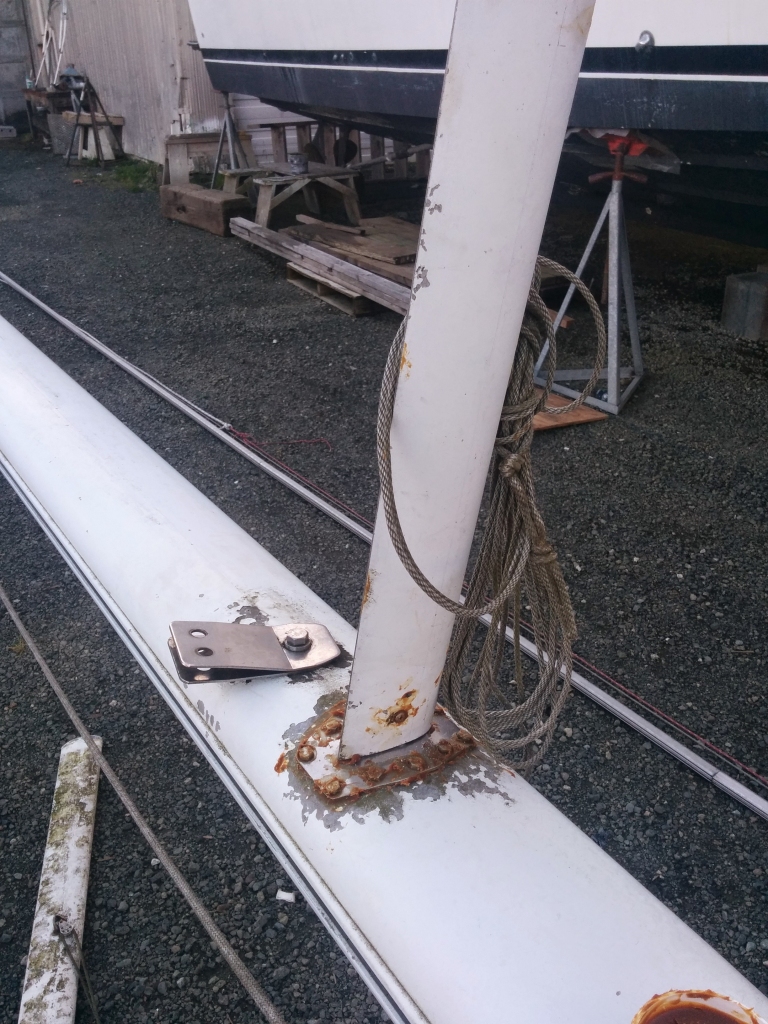 .
.
That being done, I decided to attach all the hardware that is attached at the spreaders first. That is, a steaming/foredeck combo light, 2 spreader lights, horn. a radar mount and an AIS antenna.
First up, the steaming light.
Talking to people, it seemed the best way to attach stuff to a mast is to drill+tap a hole and then use machine screws to mount the hardware. I had no idea how to do this, but it turns out not to be hard.
First you drill the correct sized hole, and then you use a hand tap (kind of like a large screw) to slow screw into the hole and create the thread.
This being done, I mounted the steaming light.
I managed to break the tap in the size I needed (10/24) so had to switch to a different sized machine screw, and also use rivets for the next part.
So next up was the radar mount. First I attached some spacers
Then the hinges went on
Finally I found the correct position on the mast and drilled the first four holes.
I was originally going to use the drill/tap method and machine screws, but I managed to break the size tap I needed, and so decided to use the SS rivets that came with the mount.
I had also never used rivets before, but they turned out to be pretty easy, though a fair bit of muscle power is needed.
Here is the finished position, with 2 out of the 6 rivets done. Note the gunk everywhere, again this is needed with the stainless steel rivets and aluminium mast.
Next was the spreader lights.
These were pretty easy to install, they came with a mounting bracket and I did the drill/tap method with the largest tap in the kit (1/4-20) and mounted them. Not sure whether to angle them fore/aft, or leave both straight down. I’ll have to think about it.
Notice the gunk everywhere.
This took two days and it was raining a TON, meaning I had to hop in and out of my car dodging rain storms. I spent a lot of time sat in my car staring at the rain. Here is an ACTION SHOT. Note the eye-gunk from not washing for a couple of days. COME AT ME LADIES
This guy came to visit but I refused to let him in since I am not keen on Wet Cat.
I was getting stressed about my lack of progress – and then I saw an amazing rainbow that appeared to end at Gudgeon!
Was it a sign?! Well no, probably not. But it’s the first time I’ve been able to see the ‘end’ of a rainbow, so that was pretty cool!
The next day, I went to mount the horn (which can also be used as a loudhailer, if I want to holla at anyone like a prat). A lot of sailboaters tend to scorn these, but having only a few days ago navigated through incredibly thick fog, this was an essential to me. Where to mount it though? On a spreader it is pretty big, and would look unequal and might get hung up on lines and ripped off.
Suddenly I had a brainwave – if I moved the steaming light down, I could mount it under the radar dome! So that’s what I did.
Fits very nicely, after I had shifted the steaming light down.
Last thing to do was the AIS atenna, I was going to spreader mount it but it on;y came with one L bracket.
I found another bracket in my bits box and connected them
Then attached the antenna
Next was to drill and tap the 5 small mounting holes
Then slap on a ton o’ gunk, and attach the antenna
I’m pretty sure it won’t get hung up on anything, but I may put a guard over it. We will see.
Still to do
– Mount masthead stuff (red/green lights, anchor light, windex, wind anemometer, new VHF antenna)
– Pull old wire
– Install condiut
– Run new wire
– Sort out thru-hull part at base of mast (this could be the leak source of the mystery starboard leak it turns out, since it was VERY badly sealed!)
So, still a ton of stuff then. Oh dear.



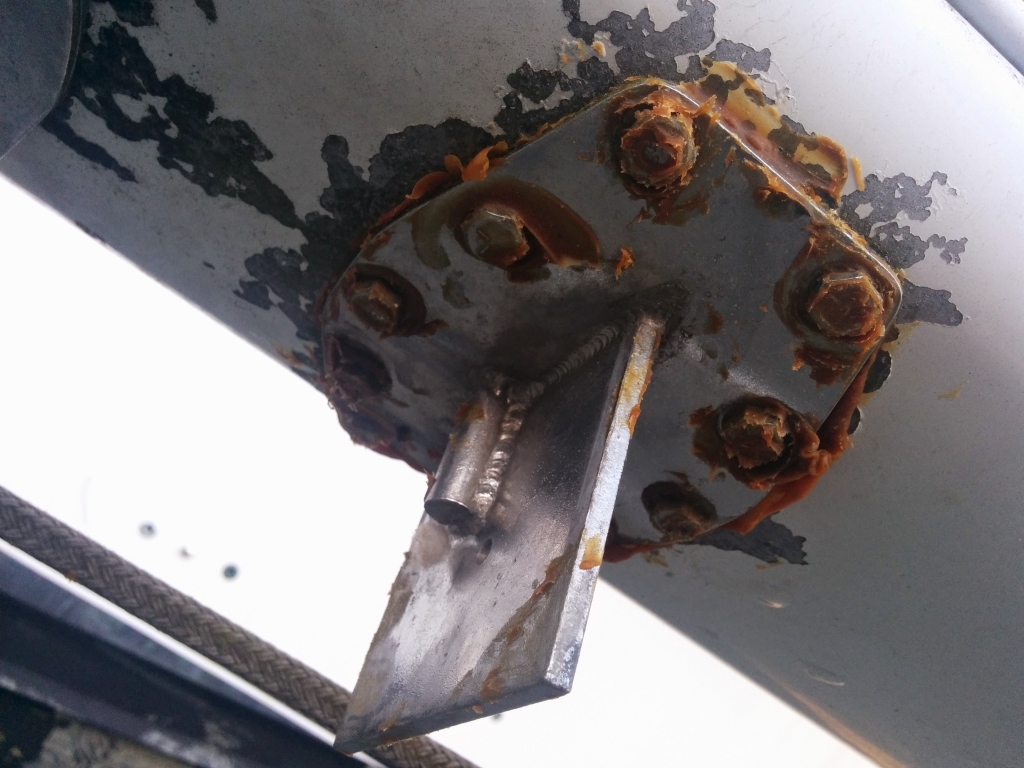





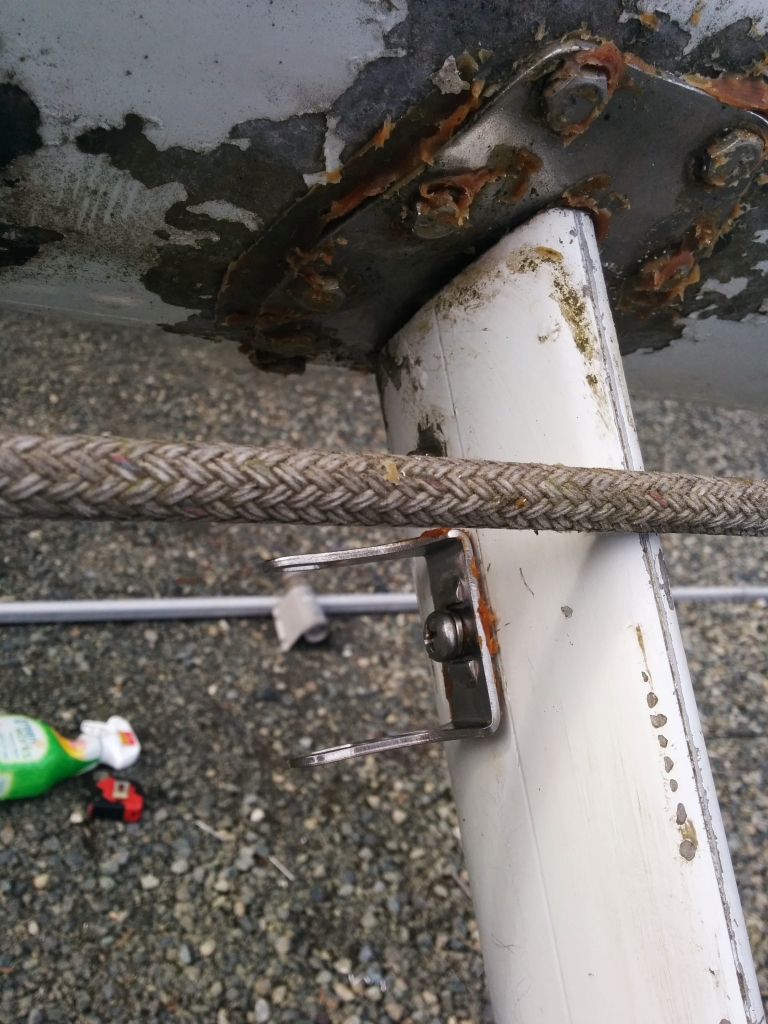



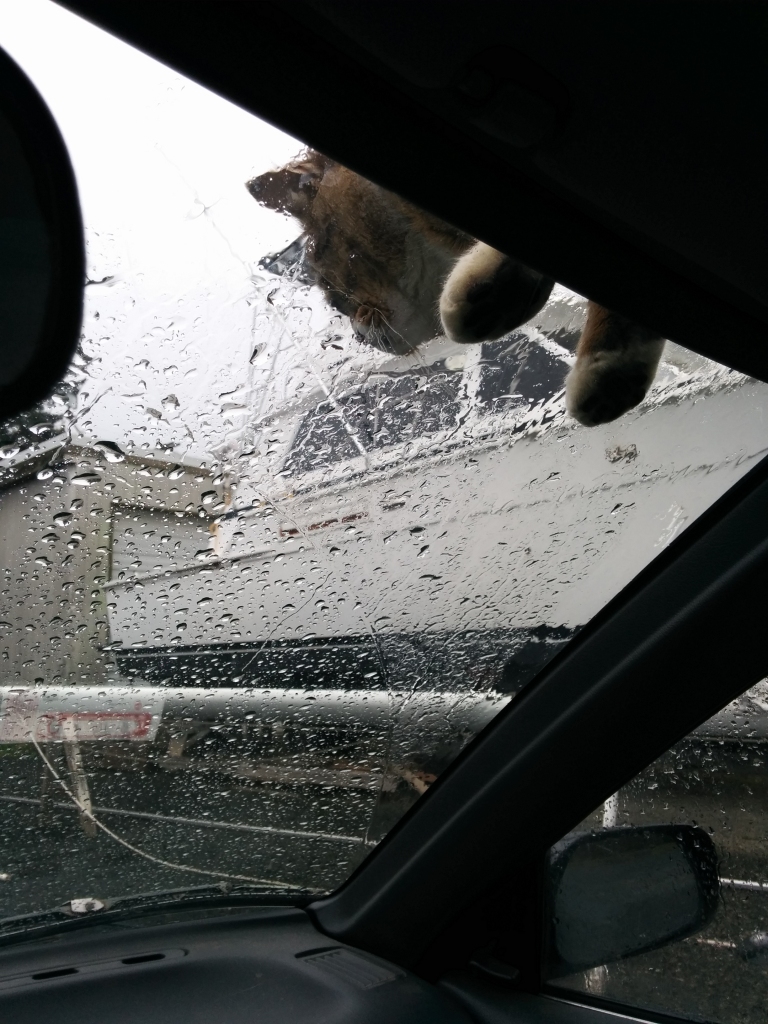
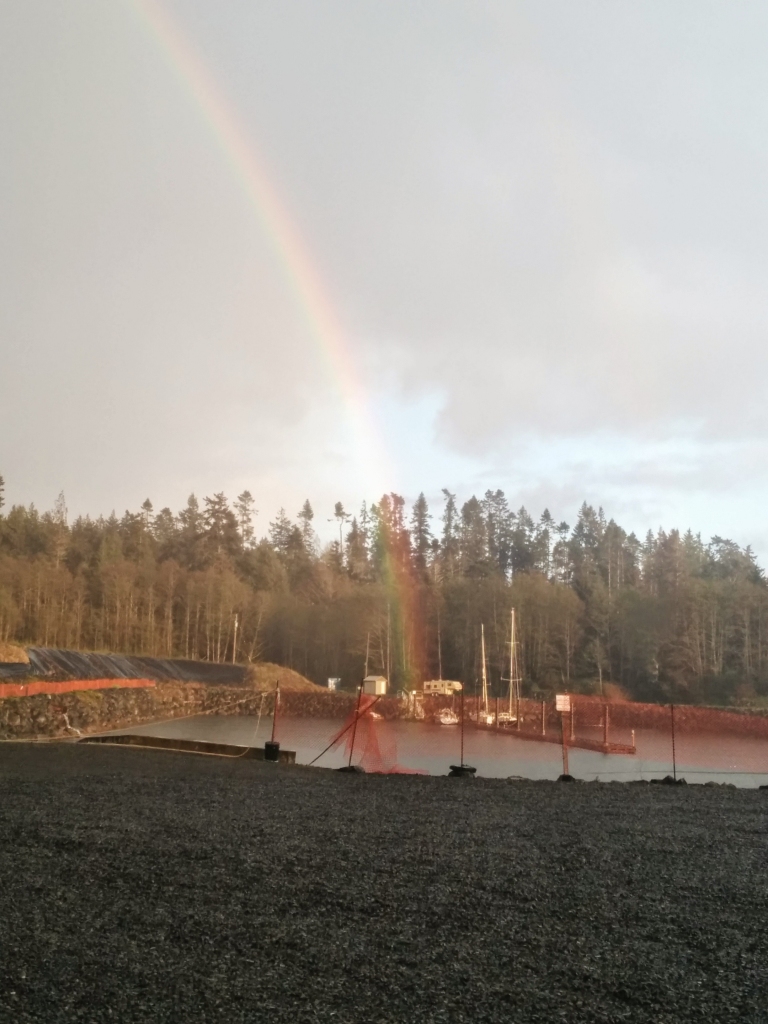


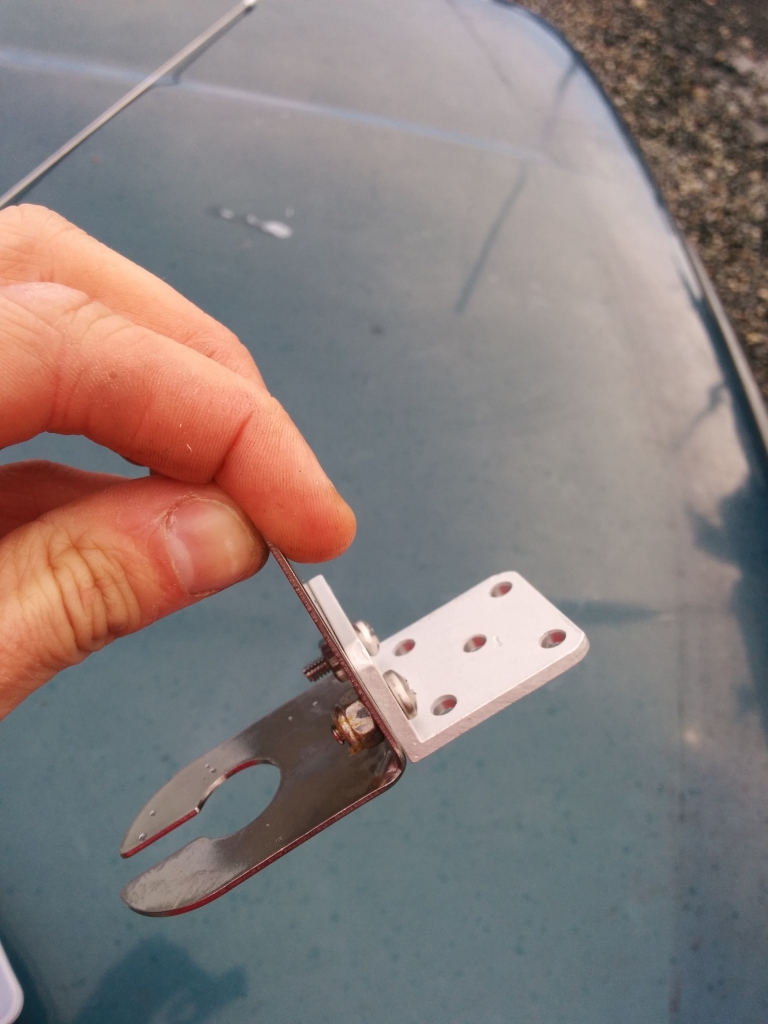

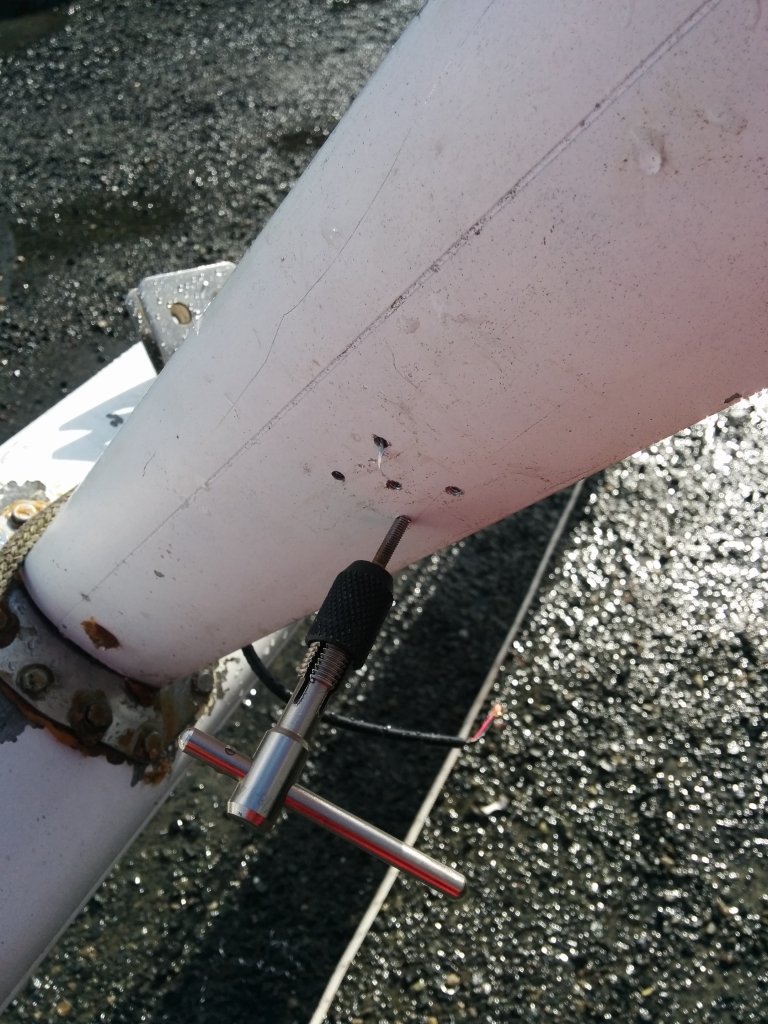
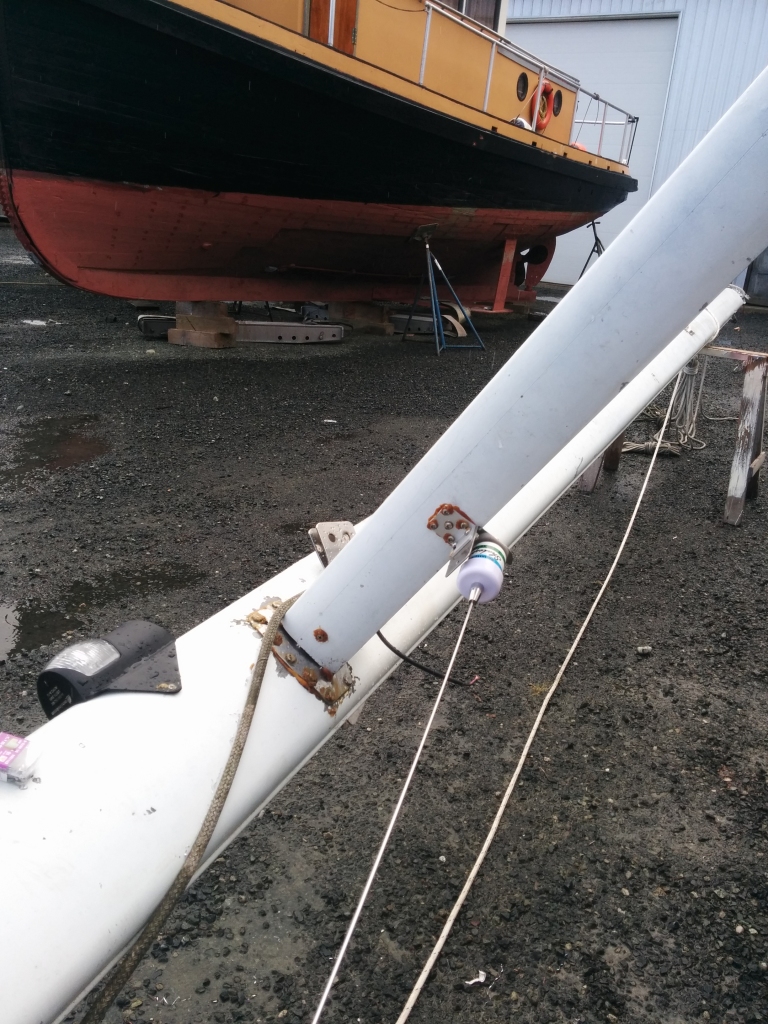
Man, you’re getting a hellava lot done! Not to mention the rainbows ending on Gudgeon! I take my mast down every year and have barely done squat on it (too many other projects…. plus being lazy)
I was wondering what kind of “gunk” you’re using?
Cheers
Thanks, it’s amazing how motivating paying 60 bucks a night is!
I use Lanocote by Forespar, here
It was actually pretty cheap for a bit ol’ tub of it. It gets EVERYWHERE though, but is non-toxic (I think. I hope!)